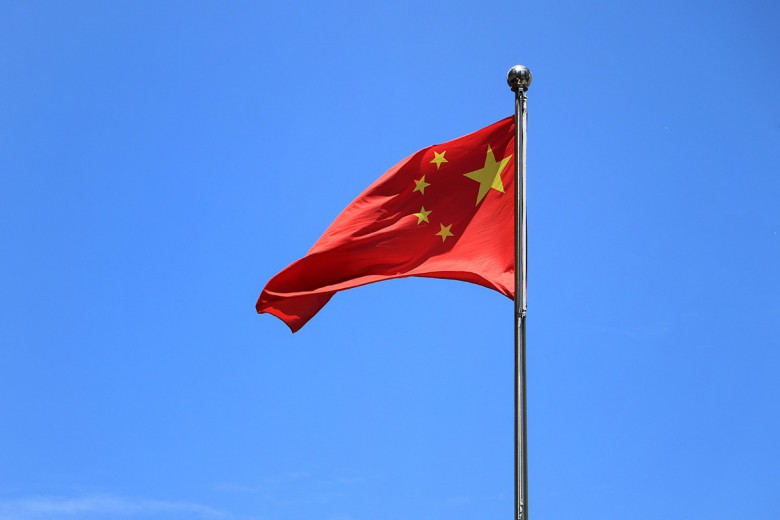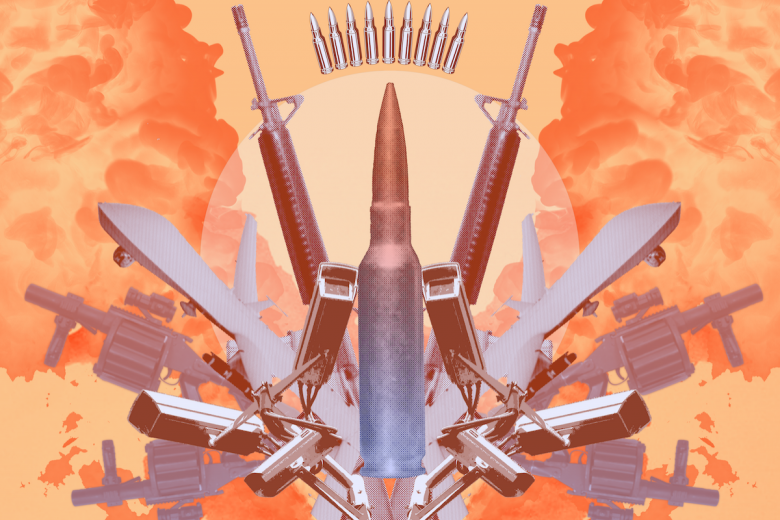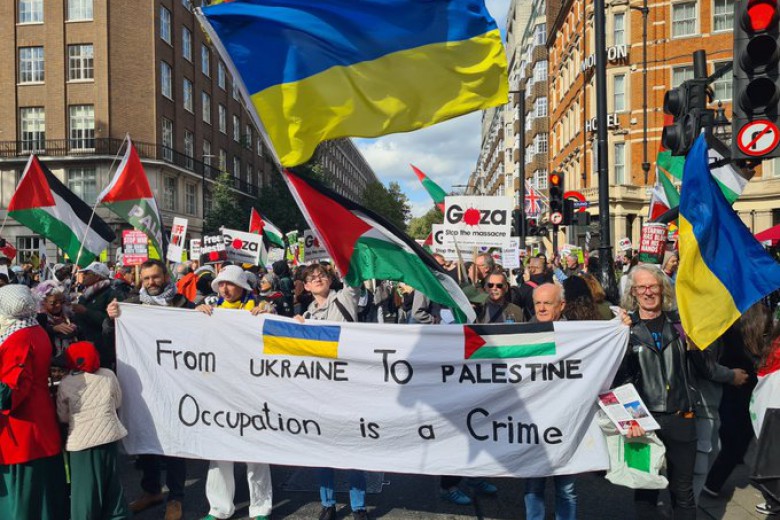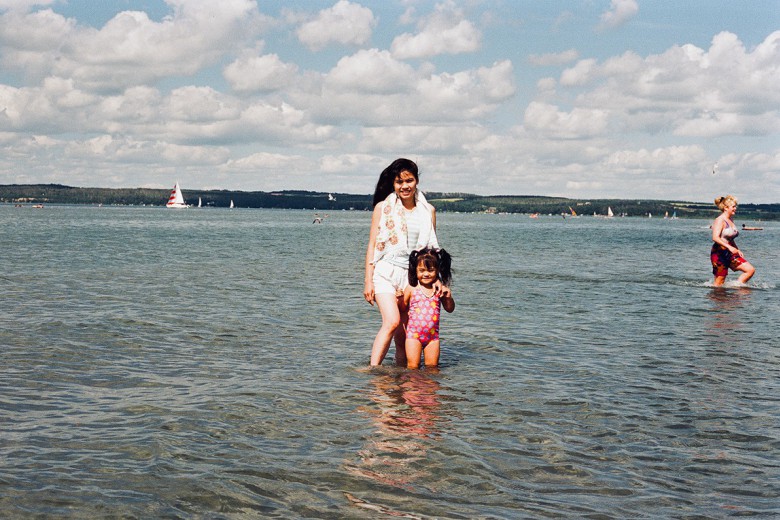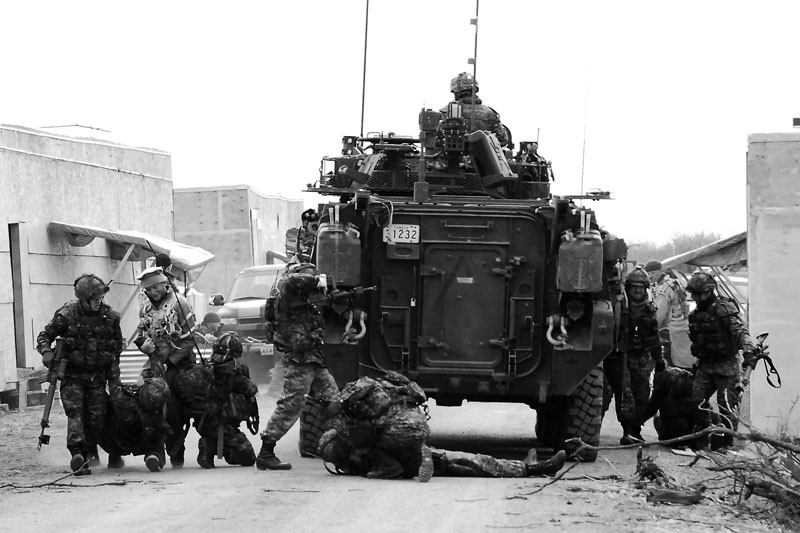
August 2009, CFB Wainwright
It was well after midnight when we got off the yellow school buses and stepped into a field of thick Alberta mud. The sides of the large field kitchen tents nearby were billowing in the cold wind. Our kit had just been chucked to the ground from the buses, each item landing with a wet thump.
Two hundred metres away, half a dozen rows of modular tents would be our sleeping quarters. No one knew for sure who belonged to which tent, so hundreds of tired army reservists, me included, grabbed rucksacks and rifles and slumped into the nearest empty cot for a few hours sleep before the early morning reveille. By morning, we knew, we would no longer be in the middle of a mud field on Canadian Forces Base Wainwright, but rather on the sweltering and dusty Kandahar Airfield in southern Afghanistan, half a world away.
Maple Defender, a week-long training exercise, was designed to give us a taste of the war in Afghanistan, as far “down in the weeds” as it was possible to get without actually being there. Some of those who got off the buses were thinking about signing up for a future tour. Others, like me, were mostly curious about Canada’s first real shooting war since Korea and here to experience the changes that had come over the military since 2006. We were all soon to be confronted by two key observations: first, Canada was truly fighting a brutal counter-insurgency war against a determined enemy. Second, perhaps surprisingly to some, the military really liked its new war. Both observations led me to ask how the Forces came to be so involved in the fighting in Afghanistan, the so-called “graveyard of empires.” Was it an accident of history or a misjudgment by ignorant politicians? Or maybe — just maybe — the Forces themselves had been a major player in the decision to go to war against the Taliban.
By week’s end, I no longer had any doubts: Canada’s front-line role in the war in Afghanistan was at least in part designed by the Forces themselves as their 21st century coming-of-age party. It had been planned and executed to this end and had, on its own terms, been a spectacular success. Meanwhile, most Canadians have no clue that their country has been backed into a shooting war through the deliberate actions of a senior group of bureaucrats and military brass pursuing a particular political agenda.
When I first visited CFB Wainwright in the early 1990s, it was a sleepy place near its namesake, a farming village in east-central Alberta, about 60 kilometres from the Saskatchewan border. The base then, as now, sprawled over hundreds of kilometres of gullies and small hills, cut through by the Battle River. Back then, Canada and its NATO allies were still training for the kind of war that would be waged against the Soviet Union and the Warsaw Pact — a self-evident anachronism. Even those new to the Forces knew that Canada wasn’t going to be fighting the Russians in any foreseeable future. So who to fight? A military, after all, is designed to fight wars. Without real enemies, the very notion of having an army at all begins to lose its lustre. With politicians of all stripes starting to wonder aloud about the future role of the Canadian Forces, an existential angst had begun to ripple though the ranks. The Forces really needed a credible enemy, and soon.
In the years between the collapse of the Soviet Union and 2001, the Canadian military used Wainwright to train soldiers for deployment to the civil wars in the former Yugoslavia. After 9/11, when Afghanistan became the Forces’ focus, the base was rebranded as the Canadian Manoeuvre Training Centre. Wainwright’s location, cold winters and hot summers proved a perfect training ground for the new mission of fighting the Taliban insurgency.
The new training doctrine adopted by the Forces was called the “three-block war” lifted directly from U.S. military practice. In three-block warfare, the first block consists of low- to medium-level combat operations against generic insurgents, rather ominously known as “rest of the world enemy” or ROWEN. Block two involves so-called stabilization operations — in other words, the mopping up phases of combat. The final block consists of reconstruction efforts in which the military works alongside civilian and non-governmental agencies to fix the things that all the fighting has so effectively broken.
To transform Wainwright into a mock-up of Kandahar province in which the Canadian army could practice, the Forces created a field camp modelled after Kandahar Airfield in what had until then been open prairie. Lines of modular tents and field kitchens, just like at the real Kandahar Airfield, were set up to house and feed the soldiers rotating through. Wainwright’s Kandahar Airfield also contained a command centre to direct the exercises and to train senior staff controlling the movements of the battle group’s diverse elements. Roads through the training area that had previously been named by colour (for example, “Purple Route”) were renamed after Canadian brands of beer to mirror those in the Canadian area of operations in Kandahar province. Faux Afghan villages with Pashtun names were built. To add an extra dimension of realism, the military supplied “enactors” — soldiers and civilians, many of the latter Pashtun-speaking immigrants who would role-play the parts of villagers, insurgents and the Afghan National Police or army. Combatants — insurgents and Canadian and Afghan Forces alike — were all outfitted with sensor-equipped vests and helmet and rifle attachments that would tell them and the training staff if they had been killed or wounded in any of the pretend firefights. Fake improvised explosive devices were detonated next to convoys to mimic the real thing. Detailed operations included moving into villages to cordon them off and search for insurgents. Other drills focused on convoy escorts or resupplying forward operating bases. 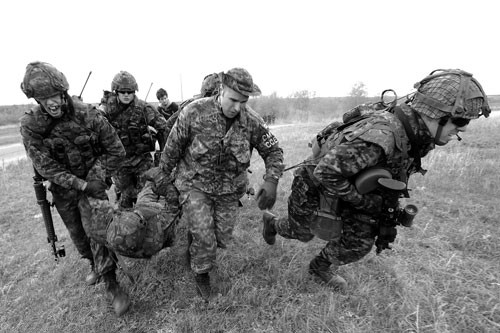
For each successive battle group preparing to deploy to the war, Wainwright had become a key landmark en route to the killing fields of southern Afghanistan.
Along with the new training doctrine and more sophisticated equipment, a new — some would say renewed — martial ethos had emerged. What the Forces had themselves termed “the decade of darkness” that followed the end of the Cold War had for many in the Forces been a time of widespread demoralization. Both Conservative and Liberal governments had downsized the Forces. Endless budget cuts only added to the sense that the military was not held in particularly high esteem. Worst of all, neither government nor “civis” (civilians) seemed to know or even care very much what the Forces did on their behalf in the endless peacekeeping assignments tossed at them by the governments of the day.
This was all soon to change. After February 2006 and the Canadian Forces’ massive deployment to Kandahar province in Afghanistan’s volatile south, the Canadian Forces had gotten its groove back. Military doctrine was revised to deal with the changing reality of fighting insurgents rather than Russians; with this change in focus came new and more sophisticated equipment and above all, a new mentality. With an aggressive new mandate in an expanding war, the Forces, many believed, would finally have a chance to show what they were capable of. And that was killing people. This, after all, is what armies are for, and few in the Canadian Forces seemed in the least shy about admitting it, first only in private but soon in public as well.
Soldiers serving in any of the branches termed Combat Arms, especially in-line infantry units, have no illusions whatsoever about what their ultimate job is and are not in general inclined to be squeamish or unduly troubled by organized violence. The prevailing mentality in the Forces is best summed up by George Orwell’s words: “People sleep peaceably in their beds at night only because rough men stand ready to do violence on their behalf.” General Rick Hillier, then Chief of the Defence Staff of the Canadian Forces, was completely candid when he told a reporter in 2005, “Being a soldier means you go out and bayonet somebody. We are not the Public Service of Canada. We are not just another department. We are the Canadian Forces and our job is to be able to kill people.”
After charging into Kandahar in 2006, the Forces no longer needed to justify or defend their existence to a skeptical public. They had a new raison d‘être, writ large enough for even the ungrateful politicians and civis to see: we are a first-class war-fighting machine, Afghanistan is the war, and we are punching far above our weight class… . And, above all, we like it. As the Forces’ recruiting ads that rolled out at that time put it, “Fight distress, fight chaos, fight fear … fight with the Canadian Forces.” Fighting had become the mantra, Afghanistan the ultimate place to do it. A 27 per cent increase in Department of National Defence budget between 2001 and 2007 was the payoff.
Although the Canadian public had long been sold on the idea of the Forces as peacekeepers doing good in a troubled world, this was not the image the military had of itself or wished to project. The two world wars had repeatedly demonstrated Canadian martial prowess and in the years after Korea, the Forces were demonstrably straining at the bit to take a more aggressive stance and do what they had been trained to do.
The Forces had desperately wanted a significant role in the first Gulf War, only to see most of their hopes shot down by the government of Brian Mulroney. The army, which had no serious role at all in that conflict, was particularly bitter. The outbreak of civil war in the former Yugoslavia in the early 1990s unleashed the collective hope that the Canadian Forces would get to fight, and in some cases they actually did in places like the Medak Pocket in Croatia in 1994. For most in the Forces, however, a UN mission simply entailed too many regulations and restraints, not to mention having to serve alongside countries that lacked a certain Anglo-Saxon military ethic — that weren’t, in the parlance of the Forces, “the countries that ski.” The mission in Bosnia was viewed in a more favourable light once NATO took it over, but by then it, too, had begun to go stale.
September 11, 2001, was a shock to the West, but a godsend to the Forces. The United States, our biggest ally, was going to war in Afghanistan and had invoked NATO’s mutual defence clause, obliging the rest of the NATO countries to come along. The Forces would soon have the chance to prove their worth.
Canada rapidly responded to the U.S.‘s Chapter 5 request and on October 7, 2001, the Forces were mobilized for Operation Apollo. Naval forces were sent to the Persian Gulf to cut off any al Qaeda supporters who might be trying to flee American wrath by water. The Army came out one better when the Third Battalion of one of the Canadian Forces’ key fighting regiments, the storied Princess Patricia’s Canadian Light Infantry, deployed to Kandahar in February 2002. The secretive commandos of Joint Task Force 2 also joined in the hunt for al Qaeda fighters. The Patricias saw action under American command in Afghanistan’s south and by all accounts performed admirably in their assigned tasks. The only thing that really marred this first deployment was the loss of four soldiers to a friendly fire incident in Kandahar province in which U.S. warplanes bombed a group of Canadian soldiers engaged in a training exercise.
This first phase of the West’s newest Afghan war ended relatively quickly. The U.S. and its allies, together with the warlord forces of the “Northern Alliance” pushed the Taliban from power, smashed or drove into Pakistan any remnant al Qaeda fighting bands and rapidly consolidated the country under a new leader, Afghan expatriate and former Unocal employee Hamid Karzai. Osama bin Laden and his fighters faded away into Pakistan’s North West Frontier tribal regions, and former Taliban fighters either changed sides or went home to their villages.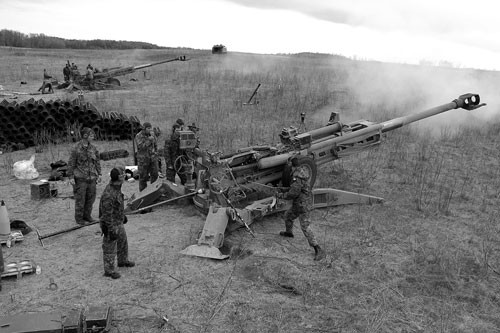
With the war against the Taliban supposedly over, Canada rotated the Patricias back to Canada in the summer of 2002. While the naval deployment in the Gulf remained largely unchanged, the land forces in the new operation, termed Athena, were based out of Camp Julien near the capital, Kabul. The Canadian military took the lead in the NATO-commanded International Security Assistance Force (ISAF) as phases two and three of the three-block war were to go into effect.
In Afghanistan’s southern and eastern provinces, however, it was not as calm as reported in the mainstream media. In Kandahar province in particular a resurgent Taliban was already becoming more active, catching the U.S. and NATO offguard. In hindsight, the renewed fighting was predictable given that the various governments with military forces in Afghanistan as well as the UN had engaged in a form of benign neglect. For the U.S. military the war against the Taliban was won, control would be maintained through pay-offs of regional warlords, and now they had their eyes firmly fixed on the looming conflict in Iraq. The endemic poverty of the Afghans seemed to have fallen off the radar as had the need for aid and reconstruction projects. Worse still from the perspective of the Pashtun majority in the south and east, ISAF seemed intent on ignoring the blatant corruption and limited reach of the Karzai government.
The top leadership of the Canadian Forces, meanwhile, had angled for the military to join the “coalition of the willing” in the run-up to the invasion of Iraq. This time their hopes were dashed by Jean Chrétien, who had read the polls and knew that the public wouldn’t support a direct Canadian role in the war. A real combat mission for the military, especially after the years of hobbled engagement with the UN in Bosnia, most decidedly would not be found in some other UN-run humanitarian intervention in the Congo or Darfur. This left the still-simmering war in Afghanistan as the best hope for a hot war, but only if they got a much more aggressive role, ideally in the regions of the country where the insurgency was already brewing up.
The frying pan and the fire
In September 2003, Afghan president Hamid Karzai requested that Canada take on the establishment of a Provincial Reconstruction Team site somewhere in the country. Foreign Affairs and Department of National Defence officials considered various locations before recommending Kandahar, the site of the most active insurgency.
By December 2003, a new prime minister, Paul Martin, was at the helm. Within a year the government chose to send the Forces south to Kandahar and into the thick of the counter-insurgency war. Key players in that fateful decision, including Martin, John Manley, Hillier and others, came from those who favoured what came to be described as deep integration with the United States. One crucial aspect of deep integration involved the Forces and the role they would play in American wars abroad. As an example, although Canada couldn’t actively fight in Iraq for domestic political reasons, it did have military personnel active in key positions in the U.S. forces, including future Chief of the Defence Staff General Walter Natynczyk, who served as deputy commander of coalition forces in Iraq during the early phases of that war. Integrating with the Americans didn’t only have to be about a potentially explosive and unpopular decision to send the Forces to war in Iraq, but definitely could include “backfilling” the U.S. in Afghanistan, given that the counter-insurgency war in Iraq was not going so well.
For those from Canada’s business, government and military elites, Canada’s choice had become very clear after 9/11: the U.S. was the sole remaining superpower and was virtually destined to dominate the 21st century. Canada’s options were either to accept deep integration willingly or be forced into it. Joining the fight in Central Asia was the asking price for a choice seat at the table of the new world order. All of this fit well into the neo-con narrative that the wars of the Middle East and Central Asia were part of an existential war for Western civilization. Op-ed pieces that had graced various editorial pages in the West immediately after 9/11 championed this perspective. It was once more time to take up the “white man’s burden” to reinstate a form of neo-imperialism in order to “save” Afghanistan and other unfortunate countries, soon including Iraq, from the nationalistic aspirations of their benighted subjects.
A major early proponent of Canada’s participation in the war on terror was John Manley, Chrétien’s foreign minister in the aftermath of 9/11. After a failed Liberal Party leadership bid, Manley retired from public life in 2004 to take on various roles in the private sector. Included in these were positions on the board of directors of Nortel Networks and the Canadian Imperial Bank of Commerce. Manley also chaired the Independent Task Force on the Future of North America, a project instigated by the U.S. Council on Foreign Relations that openly advocated for a stronger economic union between Canada, the U.S. and Mexico. Part of that integration involved closer co-operation between the various militaries.
Other major players in the decision of the Martin government to fight in Kandahar included members of the Privy Council, particularly key bureaucrat Ward Elcock, as well as a number of key cabinet ministers, including Bill Graham and John McCallum. Canadian Ambassador to Afghanistan Chris Alexander seems also to have been a crucial voice. Not least, senior members of the military were involved, notably then Lt. General Rick Hillier, the future Chief of the Defence Staff.
The Canadian Forces first began moving into Kandahar in August 2005 with the public largely oblivious to the fact that the new deployment signalled a major shift in Canadian policy in Afghanistan, involving a much more aggressive Canadian military strategy. In February 2006, the Canadian Forces deployed a much heavier battle group, Task Force Afghanistan, as part of Operation Archer, initially under the command of the U.S. military. The initial phases of the 2006 deployment of the Canadian Forces’ task force to Kandahar resulted in the first significant battles since 2002. Hillier had made it abundantly clear in comments to the media at the time that the cost in blood would not be trivial. In spite of this, the media soft-pedaled the story and most Canadians seemed oblivious to the intensity of the fighting that the military correctly anticipated.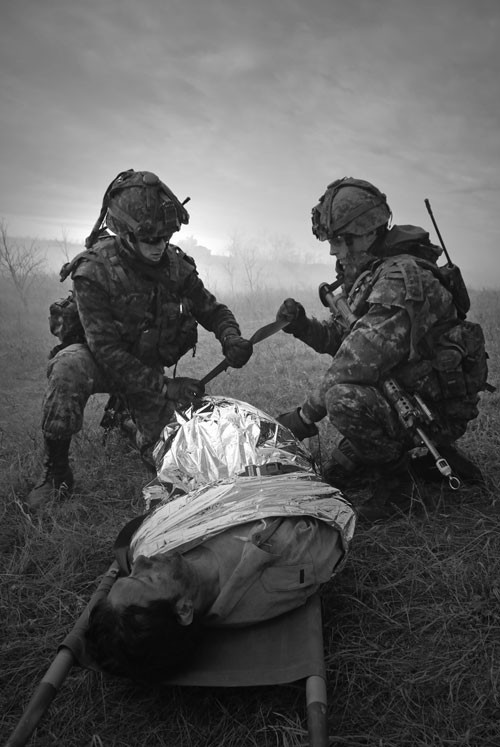
The rhetoric surrounding the mission soon changed to reflect Canada’s front-line mission in Kandahar. According to Hillier, the man who had become the public face of Canada’s military, Canadians were in Afghanistan to fight “murderers and scumbags” who hate our rights and freedoms. These were, Hillier told the public, the sorts of vile terrorists who would happily follow our soldiers home to fight in the streets of Toronto or Vancouver, if only we let them.
For the Canadian Forces, the opportunities presented by the shift in Canada’s involvement in Afghanistan favoured what they had wanted for so long: a serious war of their own to justify not just their existence, but their expansion. As independent journalist Anthony Fenton told Briarpatch, “Militaries always want to maintain a raison d‘être…. The state/military relationship [in Canada] is, for now, one of relative symbiosis: provided with the political space to fulfill their always-existing fantasies, Canada’s warrior class will, to the extent possible, set out to fulfill them.” The mission in Kandahar has the military and its political allies precisely in that space, and both the Canadian and Afghan public have been suffering the consequences of that mercurial wish-fulfillment ever since.
The view from New York
Just about a year before my stint as a reservist at Wainwright, I was sitting in an eastside midtown diner near the United Nations headquarters in New York City. My breakfast companion was Mads Oyen, a Norwegian diplomat involved in refugee issues. I had first met Oyen in Nairobi a year earlier when we were both deployed there, he with the UN, me with the Canadian Forces. Oyen was now thinking of taking a posting with the Norwegian army in northern Afghanistan at a Provincial Reconstruction Team site. But he had a newborn son at home and the idea was rapidly losing its luster as the insurgency spread. Oyen’s major concern was less with his family life than with his belief that the UN was rotating senior staff out of Afghanistan on purpose. For Oyen, these changes did not bode well for the future of the war from a Western perspective.
For Oyen, the war in Afghanistan was pretty uncomplicated in a realpolitik, practical-versus-ideological sort of way: Canada was fighting in Afghanistan because NATO was, and NATO was there because the U.S. dragged them into it in the hysteria after 9/11. Now, with the war going poorly for NATO, and thus indirectly for the UN which had sanctioned ISAF, the rationale for the continuation of the war boiled down to one thing: saving face. According to Oyen, NATO’s reputation as the kid with the biggest stick was being challenged in the poppy fields of Kandahar and the situation was only going to get worse. To be credible to future adversaries, NATO had to soldier on in Afghanistan. If that ended up costing billions of dollars and thousands of soldiers’ lives, so be it. Taking its licks, and inflicting the same or worse on the insurgents, would send the message that NATO couldn’t be pushed around. After a suitable delay, NATO could depart and if the Taliban then came back, tough beans. NATO would have kicked enough Taliban butt to show it meant business.
“But what about the Taliban abusing women and minorities in the future?” I asked. Oyen looked uncomfortable. It wasn’t that the status of the women and minorities in Afghanistan failed to trouble him, it was just that it didn’t enter into the equation.
Later that day, I met with a UN military planner, a retired infantry officer. The former soldier had seen combat in various UN hellholes and certainly knew plenty about the realities of war. He didn’t disagree with Oyen’s realpolitik views or my hunch that the Canadian military had manoeuvred itself to the front lines for its own reasons. He was less ambiguous about the fact that the war was, from a UN perspective, going badly. Several weeks previously a newly in-theatre force of French paratroopers had been ambushed and decimated in the Uzbin Valley to the northeast of Kabul. The level of coordination and planning behind the ambush was a clear indication that the insurgency had gotten a lot more sophisticated and dangerous.
Senior Canadian and NATO military commanders were surely aware of the grim prospects for victory as early as the fall of 2006. At Ma’sum Ghar in Kandahar province a large insurgent force had attempted to overrun a Royal Canadian Regiment forward operating base and had been decisively beaten back. The next morning, Canadian troops found over 70 dead Afghan fighters outside the wire.
Although the Forces and an uncurious Canadian media depicted the firefight as a significant victory for Canadian forces, the implications of the attack were not widely understood outside the military. What the media in particular did not realize was that to mount an assault on such a scale suggested that there had been a very large and well-coordinated attacking force. A standard Canadian infantry company has a size of about 120 soldiers; the standard rule of thumb for an infantry attack against a defensive position is to go in with a force three or four times the size of the defenders. The Taliban commander was almost certainly aware of the odds and had pushed hundreds of his fighters forward hoping for a breakthrough that would have had major propaganda value had it succeeded.
Boiled down to basics, the battle at Ma’sum Ghar meant this: the insurgency in Kandahar province in 2006 was operating at a level of organization and size vastly greater than what the Afghan army could itself muster by a factor of 10 or greater. One immediate implication from the simple math was that regardless of what the Canadian government was saying, the prospect of handing off the war to Afghan security forces in the near future was close to zero.
At the end of my meeting at the UN, an internal document briefing paper from the Department of Peacekeeping Operations was passed to me that gave a clear assessment of the situation: Ma’sum Ghar, the French paratroop disaster, various coordinated attacks against American forward bases, daylight attacks within Kandahar city and even Kabul and the spread of the fighting to the previously quiet north and west told the UN — and anyone else paying attention — that the war was entering a new phase, one unlikely to favour the outcome that NATO or the UN was hoping to achieve.
Hearts, minds & hardware
The new Conservative minority government of Stephen Harper came to power just as the fighting in Kandahar province intensified for the Canadians. They had proudly inherited the previous government’s Afghan war and now sought to justify it to a public increasingly skittish about Canadian casualties and increasingly skeptical of the stated premises for war. In an effort to quell public discontent, Harper appointed John Manley as the chair of a panel tasked with providing an “Independent Report on Canada’s Future Role in Afghanistan.” The Manley panel presented its report in January 2008; both the governing Conservatives and the opposition Liberals accepted it uncritically.
Much of the report mirrored the views of the International Council on Security and Development (ICOS, formerly the Senlis Council), a think tank headquartered in London but with offices around the globe. ICOS clearly recognized that the war in Afghanistan would not be won by military means alone. Instead, NATO had to focus its efforts to “win hearts and minds” of the Afghan people by helping to provide basic services and lift Afghans out of chronic poverty. Even as the Canadian battle group deployed to Kandahar, a 2006 report entitled “Losing Hearts and Minds in Afghanistan” had already noted the obvious: “Currently the people of Kandahar have little reason to support the Canadian military mission. In fact, support for the insurgency is growing in this traditional Taliban stronghold as both the Afghan government and the Canadian mission have failed to provide the promised essential services, food and medicines to the people in need.” In other words, what was needed was more aid to go with more fighting, as if the losing equation could be balanced somehow by this addition.
Subsequent policy papers from ICOS on Canada’s role in Afghanistan followed in 2007 and 2008. ICOS and Manley agreed that Canada’s role in Afghanistan was important, that Canada should “stay the course” without a fixed withdrawal date for a variety of strategic and geopolitical reasons, while at the same time recognizing that the security situation had gotten much worse. Both reports urged greater leadership by Canada in NATO to promote the war and more NATO troops from other member countries. Both wanted the Canadian Forces to help build up the Afghan National Army so that it could take on an increasing role in the fight, while ignoring the lessons of Ma’sum Ghar and what the Canadian Forces and the UN already knew.
Happily for the Forces, both reports advocated more and better equipment in concert with better “engagement” with Canadians in order to drum up public support. In regard to the “hearts and minds” approach stated in the 2006 report, ICOS and Manley found a number of points of agreement, including trying to encourage the U.S. to abandon a woefully misguided policy of poppy eradication.
There were only two places where the reports fundamentally diverged. ICOS wanted Canada to provide stronger diplomatic support to the increasingly isolated Karzai government and advocated a broadening of the war in its calls for NATO to pursue Taliban fighters into neighbouring Pakistan “alongside the Pakistan military to root out Taliban bases.” The Manley report sidestepped both issues.
The 2008 Manley report was, overall, a rather bland document, not least in the various familiar premises for war that were reiterated within its pages. However, oddest of all was what the document did not say, highlighted by a particular phrase that quite casually noted that Canada had sent its battle group to Kandahar “for some reason.” Such a throwaway line in a report chaired by a complete insider, one who had championed deep integration, was quite simply bizarre: if Manley really didn’t know why the Forces had been reassigned to Kandahar, who did? Canada was in a serious shooting war, soldiers were dying and the public was starting to ask questions. How could the Manley report not at the very least posit a credible sounding reason? Strange as this was, the mainstream media along with most MPs in Parliament passed over this comment in silence, if they noticed it at all. Indeed, the questions that should have been raised were the most fundamental: what was Canada really doing in Afghanistan and why? Who stood to gain from Canada’s much more aggressive role? Who had really taken Canada to war?
Dissecting the premises for war
Why is Canada fighting a bloody war in Afghanistan? Much ink has been spilled trying to answer that question, but none of the standard reasons — fighting terrorism, liberating women, promoting democracy — actually stand up to serious scrutiny. The real reason, I would suggest, is much more quotidian: the military needed a real war to prove its relevance and justify its slice of the federal budget pie. And it got what it wanted, at the cost of thousands of lives — 142 Canadians to date, and many more Afghans.
The Canadian military establishment, reeling from years of what it considered outright neglect, needed a war in which it could reassert its importance. They found one thanks to the deep integrationists on the Privy Council and Cabinet. Their champion in this endeavour was General Rick Hillier, the so-called “soldiers’ soldier” the man who most in the Forces believe won them the respect they felt they deserved. Hillier had been ISAF commander in Kabul in 2004 and knew the war well. He was also articulate and appeared to have supporters on Privy Council. The circle was completed when he was named Chief of the Defence Staff in 2005. Far from being merely loyal soldiers doing what they were told, Hillier and other top commanders had helped manoeuvre Canada into a war they could call their own.
It was obviously a gamble. Hillier and the military establishment may have been betting that sending the army south would succeed, not only from a military perspective, but also on the political front. They certainly succeeded politically, even if they seem ultimately doomed to fail militarily. The sudden flurry of “support our troops” bumper stickers and rallies came right on the heels of the first battles with the Taliban. Those in Parliament and among the public who opposed the expanding war would quickly be branded as unpatriotic for not being behind our fighting soldiers.
To a large extent, the military got what it wanted. The Canadian military of 2010 is nothing like it was pre-2006. The rhetoric and pride in the ranks, along with the functional combat capability, far outstrip anything since World War II. From a Canadian Forces perspective, the war in Afghanistan, for all the cost in lives and treasure spent, has been well worth the price. Regardless of the eventual outcome of the war for those in the political realm who championed it, the Forces came out on top.
Endgame
The election of Barack Obama in 2008 came at a time of urgency bordering on panic for NATO, with American and British military commanders in Afghanistan beginning to speculate on the prospects for the defeat of NATO and a return of the Taliban to power. One of Obama’s first moves was to order a surge of U.S. forces into Afghanistan, particularly to the south, with a focus on Kandahar and Helmand provinces. In short order, the U.S. was to assume the bulk of responsibility for the fighting in the south, rolling back Canada’s area of operations to a region around Kandahar city.
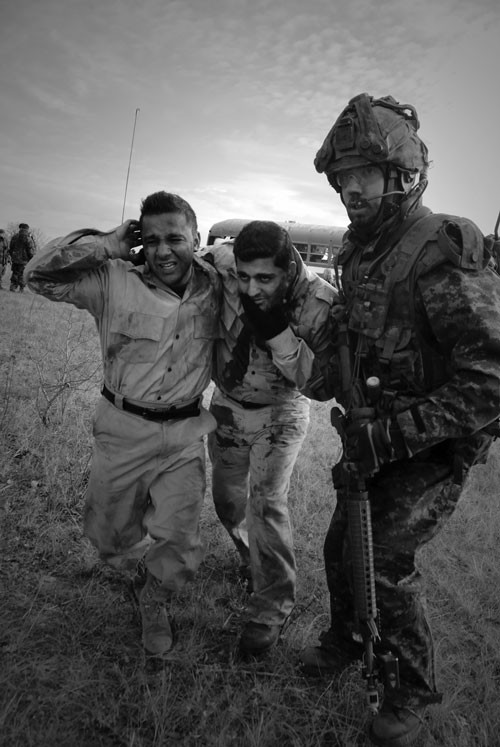
In March 2009, Obama agreed to further increases of U.S. combat troops on the advice of his senior commander, General Stanley McChrystal, committing over 30, 000 additional troops to the conflict by the summer of 2010. When all are in place, U.S. troop strength will come to nearly 100, 000; the total for the other contributing nations over 40,000. The number of Soviet troops during their decade-long Afghan war never exceeded 130,000.
Canada is due to remain in a combat role in southern Afghanistan until December 2011. From now until that date over 8,000 Canadian soldiers will deploy to Afghanistan. Many of these will have already been on previous rotations. As the fighting intensifies across the country with NATO commanders pushing hard into the insurgents’ southern strongholds in a last-ditch effort to crush the insurgency, many more NATO soldiers, Canadians included, will die or be wounded. Afghans will be injured and die in far greater numbers. Many of the latter will be civilians.
Maybe in the end the various premises for war, stated and unstated, are all partially correct. Like the parable of the three blind men and the elephant, each party grasps the part of the beast that they best understand, want to believe, or which serves their realpolitik purposes: the U.S. and Canada, along with the rest of NATO, will ultimately claim they helped stymie terrorism for a while and at the same time saved the alliance and the West. Canada will add that our role was a contribution to try to save a failed state. The Canadian Forces can point to a new war-fighting prowess as it gears up for future missions into ROWEN countries. Everyone who started Canada along the road to war got some of what they wanted, even if the mission as a whole is a failure.
The losers, as usual, are those who bear the brunt of the slaughter. Soldiers fight, bleed and die. Families back in Canada mourn. And, increasingly, Afghan civilians join the ranks of the dead and maimed. All, in the end, become line item entries in the final butcher’s bill for a war that never really had to be.
Acknowledgments
I am grateful to Anthony Fenton for his insights into the origins of the war, the machinations of the Canadian political and military establishments, and for his comments on an earlier draft of the manuscript. Thanks also to John Warnock who generously provided a preprint of one of his articles on Canada’s war in Afghanistan. I am also indebted to Jon Elmer who provided useful perspectives and Danika Surm who carefully read and critiqued the various drafts.


